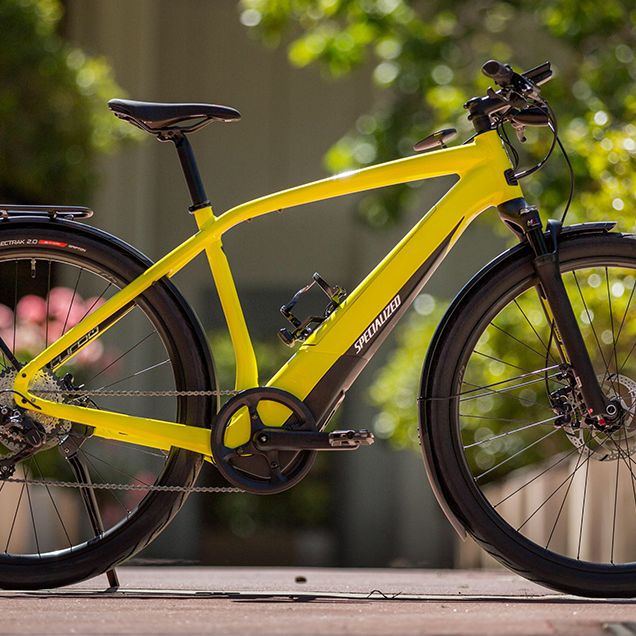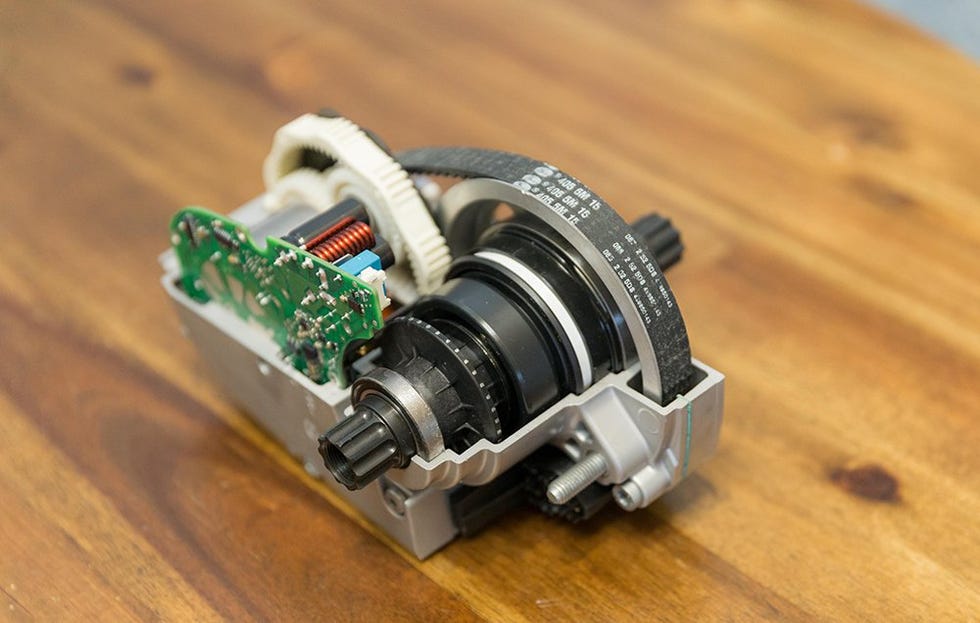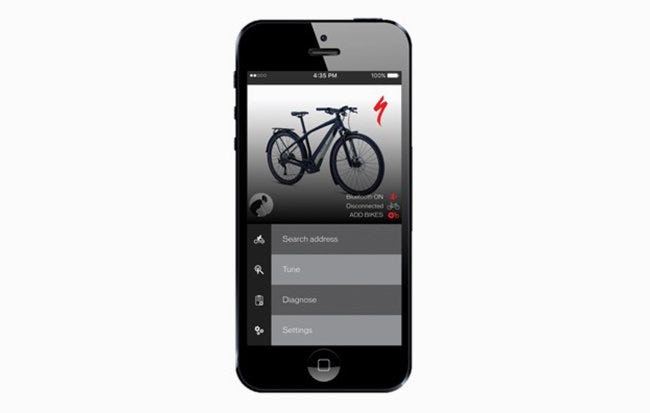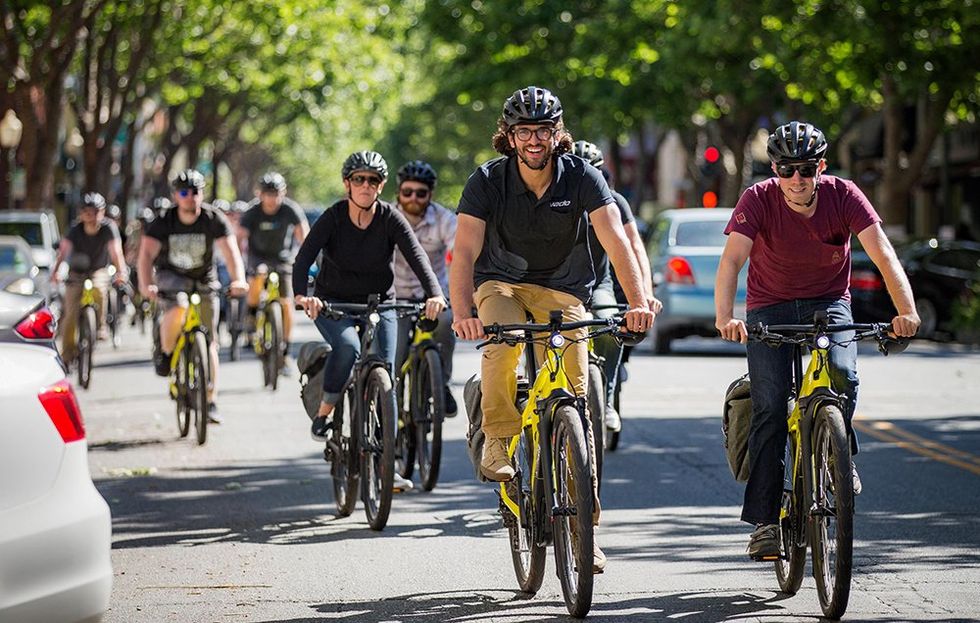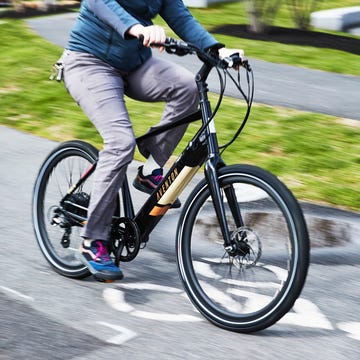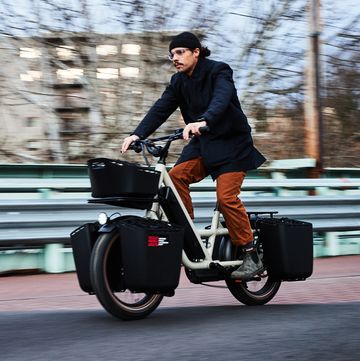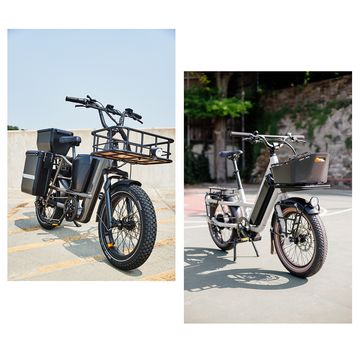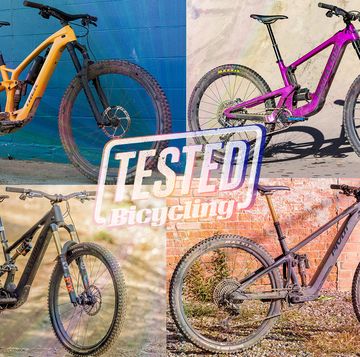Specialized debuted its first e-bike, the Turbo S, in 2012. With the tagline “it’s you only faster,” the S was a functional, fast, capable, and formidable competitor in the e-bike market. Outside of the larger downtube housing, the battery, and the larger rear hub/motor, it looked like a bike, rode like a bike, and was a blast to ride, with performance that was above and beyond many other offerings from competitors. Its near-silent operation gave the rider what felt like superhuman powers, but was hindered by its high cost and a somewhat limited range (batteries lasted roughly from 30 minutes to an hour). Since the Turbo S, several other models came to be, including the Turbo X and more recently, the Turbo Levo.
In the e-bike world, technology has progressed substantially in the past few years, and it’s very clear that the 20-person international team at Specialized dedicated to Turbo has been working to make a much better, more refined electric assist bike. The company's new Turbo Vado has a new look, a technological makeover, and is much more refined than the original Turbo. Specialized invited us to Palo Alto, California, in the middle of Silicon Valley, to preview the Turbo Vado and learn what went into its creation. (Don't miss any of our latest bike reviews as they come in by subscribing to our newsletter!)
First Impressions
From the ground up, the new Vado is something different. Constructed of E5 Aluminum, the battery has been neatly integrated in the down tube, and the motor on the bike has been relocated to the bottom bracket area, rather than in the rear hub, as on the original Turbo S. These changes center the weight, bringing better balance and weight distribution. The near-silent belt drive system, designed by Specialized in conjunction with German company Brose, is said to provide up to 320-percent support for the rider up to a top speed of 20 or 28mph (depending on the model), and decouples from the drivetrain after passing top speed, allowing the rider to coast or pedal with no resistance.
Battery life has been improved, with a 460 WH 40-cell lithium ion battery on the Vado 2.0 and 3.0, and a 604 WH battery on the 5.0 and 6.0. According to Specialized, this should net you between 28 and 38 miles of riding, respectively. By using Specialized’s Mission Control app, available for Android and iPhone, the bike is highly tunable in just about every way imaginable. You can choose your initial power output to max power output in three completely tunable modes: Turbo, Sport, and ECO. The bike can also be pedaled with the motor off. The battery is removable with an ABUS key—handy if you live in a high-rise apartment or work in an office, and need to take the battery sans-bike upstairs for a charge.
RELATED: 10 Ways to Save Battery Life on a Ride
Safety and comfort was a major developmental consideration. A powerful 600-lumen light is smoothly integrated into the front, while the tail light is recessed into the rack, doubling as a brake light that increases in intensity as brakes are applied, just as in a car. There’s even a surprisingly loud horn. (We found this particularly useful when navigating the streets, although it's a bit startling if you accidentally hit the button.)
The controls are all integrated into the cockpit so that there’s never a need to take your hands off the handlebars. There is a 2.2-inch heads-up display that feels like (and reacts like) a smartphone to touch. The tires are Specialized brand 2.0-inch armadillo casing. I talked to Specialized’s founder Mike Sinyard, who has been logging miles on a near-daily basis on his Turbo for a couple of years now; he said he has yet to get a flat.
Fenders were even thought through and designed specifically for the Vado. Called “Drytech,” they're more than long enough to keep dry in damp conditions. Made of a more pliable plastic on the ends, Specialized claims they provide extra flexibility in the case of getting hung up on a step or curb.
Android and iOS Integration
Specialized’s Mission Control app—like what is found on the Specialized Turbo Levo, is still in development. When released, Specialized claims that it will offer some pretty cool features to help navigate and plan your routes, based on details like battery life and power, to ensure you can make it home. (It'll also help you consider hills, power output, and distance, adjusting the metrics accordingly.)
Build Options
The Vado is available in several different models, with both standard and step-through models for men and women. The higher-end 5.0 and 6.0 come with some added features, along with the higher capacity 604 WH battery. Batteries are interchangeable between all models, and the 604 WH battery can be purchased on its own for those looking to upgrade or want a spare.
Ride Impressions
The Vado has a claimed weight of about 43lbs—respectable for an e-bike. Once you’re riding it, the seemingly heavy weight disappears and it feels very much like any other non-electric model. We spent the first day running around town in Palo Alto for several hours and covered 15 to 20 miles. With a variety of starting and stopping scenarios along mixed surfaces, the larger tires were more than capable, and the TRP disc brakes proved plenty powerful. After countless starts and stops with several hours on the bike, I still had 62 percent of my battery power left.
On the second day, we pedaled out of town and up into the hills. After a steady several-mile-long incline, which we breezed up (and passed many commuters pouring sweat along the way), we came to a much steeper 10-to-15-percent grade. That's when we learned that although the Vado is an e-bike, it’s still very much a bicycle. Climbing the steep hill was slower, still took effort, and required several downshifts to keep my pace going up the incline.
Descending was a blast, and the bike was comfortable and stable. While the motor does turn off at 28mph, it doesn’t hold you back. If you can pedal the bike faster than 28mph unassisted, you will continue to accelerate just as on a normal ride. Upon arriving back in town an hour and a half later, we had gone through 1,500 feet of elevation in about 20 miles; I was surprised to see that I still had 52 percent of my battery life remaining.
As far as the convenience and functionality it offers in bike commuting, the Vado is unmatched by anything I’ve experienced before. Even as a group, going a conservative pace and staying together, we passed hundreds of cars and saved what I would guess to be several hours over the course of two days getting around town.
Simply put, the Specialized Turbo Vado is rad. If commuting to work or just around town in haste (or the option of not breaking much of a sweat) is something that you're interested in, I can’t think of a better tool to accomplish that.
